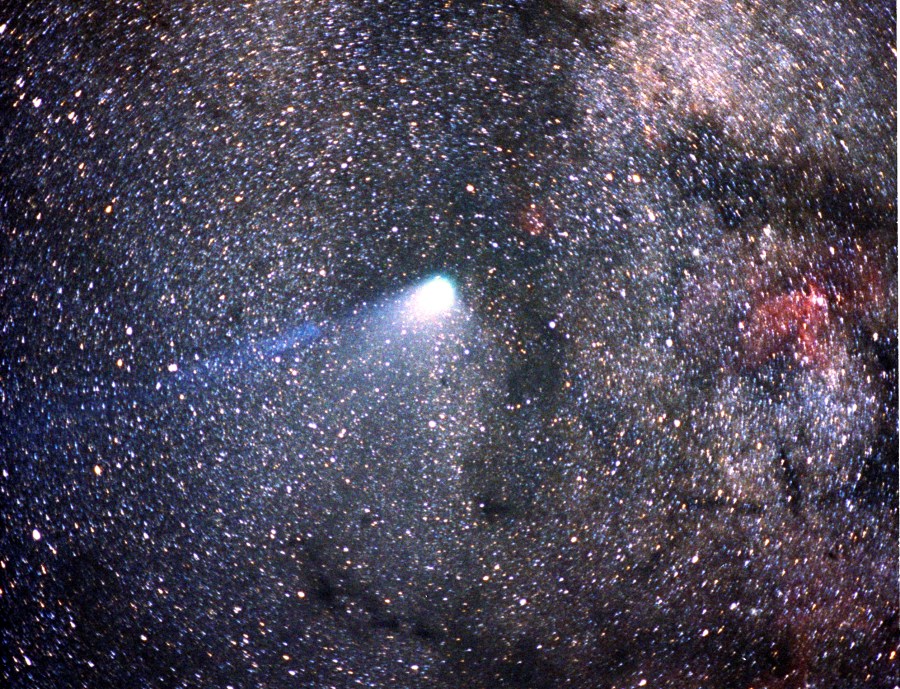We’ll kick off this year’s Cinco de Mayo festivities with an exciting celestial event – the Eta Aquarids meteor shower, which is expected to peak early Tuesday morning.
Background
Halley’s comet is one of the most famous comets known in our current study of space science. The comet itself gets within Earth’s view every 75 years, but leaves behind a trail of debris that our planet runs into twice a year, creating two annual meteor showers: the Orionid meteor shower in October and the Eta Aquarids meteor shower in May.

IN DEPTH: The last time Halley’s comet was visible from Earth was in 1986. It’s not expected to be seen again until 2061.
The Eta Aquarids Meteor Shower
As Halley’s Comet circles the Sun, the heat from the Sun allows the comet’s ice to slowly melt and shed pieces of dust, rock and gas trailing behind it. Earth first intersects this debris trail in late April and May. The small comet particles, typically the size of sand grains or gravel, within the debris trail smash into Earth’s upper atmosphere at nearly 150,000 miles per hour. As these small pieces of comet debris vaporize, they create visible streaks in the night sky to form the Eta Aquarids meteor shower.
Date, Time & Visibility
This year, the Eta Aquarids meteor shower runs April 19th to May 28th, peaking May 5th just before morning twilight.
The Eta Aquarids are visible all across the globe but are more pronounced in the Southern Hemisphere sky. It is there that the Eta Aquarids can produce up to 20 to 40 meteors per hour. In the mid-northern latitudes, the count is closer to 10 meteors per hour.
There is an opportunity to see a few meteors late evening (post-sunset on May 4th) as this is when “earthgrazers” are best seen. Earthgrazers tend to be fewer in quantity but are known to make exceptionally long streaks in the sky. As night falls, the streaks tend to get shorter, but the meteors become more numerous.
You’ll want to look towards the southeast sky at the constellation Aquarius. The ‘radiant’, or the point at which the meteors seem to radiate from, is in front of this constellation and nearly aligns with the faint star Eta Aquarii. This is where the meteor shower gets its name.
The one snag in this year’s viewing conditions may be the bright waxing gibbous moon, over 80% full on May 5th (true full moon will appear May 7th). In order to maximize your viewing potential, be sure to get away from as much light pollution as possible (out of the city).
For more on the Eta Aquarids meteor shower, visit EarthSky.org (click here).










